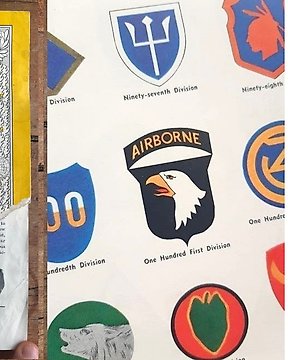US Army WW2 Stars & Stripes ''Surrender in Italy'' Issue - 9th of May 1945 - Mussolini - surrender of German Army - Reims - Italian issue - 1945
編號 83387343

United Kingdom / USA - RAF Royal Air Force Flying Handbook Hawker Sea Fury Fighter aircraft - Pilot Training Manual - Airforce - 1950
編號 83387343

United Kingdom / USA - RAF Royal Air Force Flying Handbook Hawker Sea Fury Fighter aircraft - Pilot Training Manual - Airforce - 1950
Great pilot training manual for the famous Hawker (Sea) Fury aircraft. Although the manual is from 1950, it deals with the models developed in WW2. The Hawker Sea Fury is a British fighter aircraft designed and manufactured by Hawker Aircraft. It was the last propeller-driven fighter to serve with the Royal Navy and one of the fastest production single reciprocating engine aircraft ever built. It was developed during the Second World War. Some discoloration and some wear/soiling to the back and first page, especially on the edges and the back. The cover kept the inside booklet in good condition.
Great cover and illustrations, interestng item for the WW2 Airforce enthusiast!
History of the Hawker Sea Fury
The Hawker Fury was an evolutionary successor to the successful Hawker Typhoon and Tempest fighters and fighter-bombers of the Second World War. The Fury's design process was initiated in September 1942 by Sydney Camm, one of Hawker's foremost aircraft designers, to meet the Royal Air Force's requirement for a lightweight Tempest Mk II replacement; the Tempest, while a successful aircraft, had been viewed as being heavy and oversized for typical fighter duties. Developed as the "Tempest Light Fighter (Centaurus)", the semi-elliptical wing of the Tempest was incorporated but was shortened in span by eliminating the central bay of the wing centre-section, the inner part of the undercarriage wells now extending almost to the aircraft centreline, instead of being situated level with the fuselage sides.[3][4][5] The fuselage was broadly similar in form to that of the Tempest, but was a fully monocoque structure, while the cockpit level was higher, affording the pilot better all-round visibility.[6]
The project was formalised in January 1943 when the Air Ministry issued Specification F.2/42 around the "Tempest Light Fighter".[7] This was followed up by Specification F.2/43, issued in May 1943, which required a high rate of climb of not less than 4,500 ft/min (23 m/s) from ground level to 20,000 feet (6,096 m), good fighting manoeuvrability and a maximum speed of at least 450 mph (724 km/h) at 22,000 feet (6,705 m). The armament was to be four 20mm Hispano V cannon with a total capacity of 600 rounds, plus the capability of carrying two bombs each up to 1,000 pounds (454 kg).[8] In April 1943, Hawker had also received Specification N.7/43 from the Admiralty, who sought a navalised version of the developing aircraft; in response, Sidney Camm proposed the consolidation of both services' requirements under Specification F.2/43, with the alterations required for naval operations issued on a supplemental basis. Around 1944, the aircraft project finally received its name; the Royal Air Force's version becoming known as the Fury and the Fleet Air Arm's version as the Sea Fury.[9]
Six prototypes were ordered; two were to be powered by Rolls-Royce Griffon engines, two with Centaurus XXIIs, one with a Centaurus XII and one as a test structure. Hawker used the internal designations P.1019 and P.1020 respectively for the Griffon and Centaurus versions, while P.1018 was also used for a Fury prototype which was to use a Napier Sabre IV.[10] The first Fury to fly, on 1 September 1944, was NX798 with a Centaurus XII with rigid engine mounts, powering a Rotol four-blade propeller. Second on 27 November 1944 was LA610, which had a Griffon 85 and Rotol six-blade contra-rotating propeller. By now, development of the Fury and Sea Fury was closely interlinked so that the next prototype to fly was a Sea Fury, SR661, described under "Naval version." NX802 (25 July 1945) was the last Fury prototype, powered by a Centaurus XV.[11] LA610 was eventually fitted with a Napier Sabre VII, which was capable of developing 3,400 to 4,000 hp (2,535–2,983 kW); this aircraft became possibly the fastest reciprocating-engine Hawker aircraft after reaching a speed of around 485 mph (780 km/h).[12]
您亦可能喜歡
- 16+







